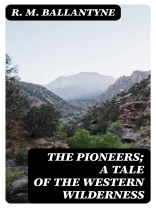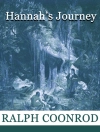R. M. Ballantyne’s ‘The Pioneers; a Tale of the Western Wilderness’ encapsulates the spirit of adventure and exploration characteristic of the 19th century. Set against the backdrop of the American frontier, the novel intricately weaves themes of survival, camaraderie, and the confrontation with nature. Ballantyne employs a vivid and energetic literary style, infused with rich descriptions that transport readers to the untamed wilderness, illustrating both its beauty and peril. As a work of juvenile literature, it also reflects the Victorian era’s fascination with colonialism and the rugged individualism of the American spirit, providing a compelling narrative for young readers while also engaging mature audiences with its complex themes. R. M. Ballantyne was a Scottish author whose prolific career produced numerous adventure novels, many inspired by his own experiences as a traveler and explorer. His journey to Canada in the 1850s deeply influenced his perspective, instilling in him a profound respect for nature and the challenges faced by early settlers. This firsthand experience, coupled with his commitment to moral lessons, distinctly colors ‘The Pioneers, ‘ making it both an exciting adventure and a reflective commentary on human resilience in the face of adversity. I highly recommend ‘The Pioneers’ to readers who enjoy robust tales of adventure and are curious about the historical contexts of pioneer life. Ballantyne’s engaging narrative style and relatable characters will resonate with anyone who appreciates the balance of thrill and moral integrity in storytelling. This book stands as a testament to the romanticism of exploration and the complexities of the human spirit.
लेखक के बारे में
R. M. Ballantyne (1825–1894) was a Scottish author of juvenile fiction who penned over 100 books. His legacy in the realm of children’s literature is marked by vivid storytelling that often drew on his own experiences. Born Robert Michael Ballantyne in Edinburgh, he was part of a famous family of printers and publishers. At the age of 16, he went to Canada and worked for the Hudson’s Bay Company, where he gathered material for his future writings. After returning to Scotland in 1847, he embarked on a career as a writer. His first novel, ‘Hudson’s Bay: or Life in the Wilds of North America, ‘ was autobiographical, but it is ‘The Coral Island’ which remains one of his best-known works. With ‘The Pioneers; a Tale of the Western Wilderness, ‘ Ballantyne continued his tradition of weaving adventure with didactic undertones. Drawing from the frontier landscape of early American settlement, he offered readers a glimpse into the challenges and triumphs of the pioneers. His works are noted for their detail, adventure, moral lessons, and the depiction of young protagonists facing the harsh realities of the world. Ballantyne’s influence extended into the lives of other famous authors, including R. L. Stevenson and J. M. Barrie, who were among the many captivated by his adventurous tales. Though his writing style is considered didactic by modern standards, Ballantyne remains a significant figure in 19th-century children’s literature.












